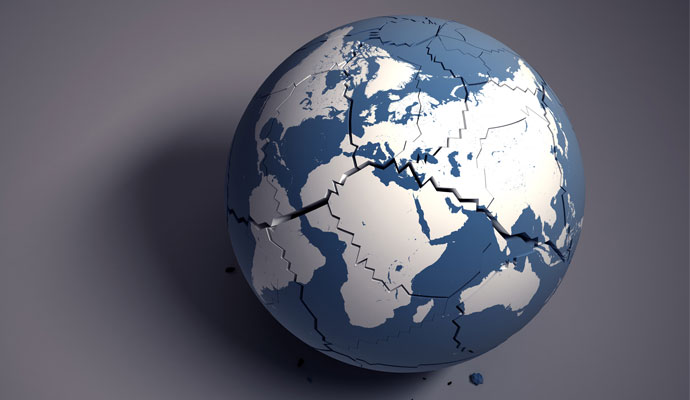Don’t Believe the Globaloney
Despite obstacles and setbacks, companies are still globalizing at a furious pace.
Generalizing from the particular is one of the biggest — and most common — mistakes analysts make. There’s a natural tendency for people to extrapolate from their own personal experience and conclude that the results are the norm. But that’s a poor analytical frame. If the main stock you chose for your portfolio is off 30 percent, it doesn’t mean the entire stock market is down 30 percent. If home prices on your street are booming, it doesn’t mean that prices in your town, or the country at large, are soaring ahead.
We can see this dynamic playing out in some of the discussion surrounding the topic of globalization. The rising flow of people, goods, services, and information across borders has been one of the defining powers of our time. It’s a force that has endured through boom and bust, and through political and financial crises. But last month, Jeffrey Immelt, the CEO of General Electric, which has 420 factories in dozens of countries around the world, said that he saw an end to this era of globalization. In the face of rising protectionist sentiment and the erection of barriers to the import of the goods that GE makes, the company might have to look at localizing production where relevant. Last week, the Wall Street Journal reported that many of the world’s largest banks have sharply reduced their overseas operations. And, of course, the U.K. may soon be reassessing its relationship with Europe.
And yet. The data — and the experience of many other companies — shows the trend of globalization is proceeding apace. Yes, the dollar value of global trade fell in 2015, largely because of the falling price of key commodities such as oil. But the World Trade Organization said that the volume of trade rose 2.8 percent in 2015, and is expected to rise another 2.6 percent in 2016. As for people moving around the world, the ITB World Travel Trends Report (pdf) found that the number of outbound trips was up 4.5 percent in the first eight months of 2015 from the year before, and is forecast to rise another 4.3 percent in 2016.
Just because your company is encountering obstacles operating in other countries, it doesn’t mean that all companies are.
Just because your company is encountering obstacles operating in other countries, it doesn’t mean that all companies are. Businesses such as power and jet engines, which happen to be two of GE’s specialties, are more susceptible to protectionist pressures than some others. And it’s understandable why the banking sector, which essentially failed en masse in 2008 and 2009 and has yet to fully recover, has been retrenching.
In fact, many other industries are continuing to find new customers, markets, and opportunities around the world. Facebook now counts 1.09 billion users, of which about 84 percent are outside the U.S. and Canada. That’s about 910 million people — in early 2013, it had only about 530 million users outside the U.S. and Canada. On January 6, 2016, Netflix said it made its service available to people in 130 countries. In the last few years, Amazon has built out its cloud business into a globe-spanning operation. And newspapers may be contracting, but the Huffington Post, which started as a U.S. operation in 2005, now has editions in more than a dozen countries and regions — including Australia, India, Japan, and the Middle East.
And it’s not just digital businesses. From the outset, Starbucks has been a percolating story of globalization. The company’s effort to bring Italian coffee culture to the U.S. requires the sourcing of coffees from South America, the Caribbean, Africa, and Asia. Having saturated America’s malls, downtowns, and suburbs with outlets, Starbucks has turned its gaze abroad. The company is already in 70 foreign markets, including many that have a strong local coffeehouse culture — France, Austria, and Turkey, to name a few. But it still has plenty of new territory in which to plant its seeds. This spring, Starbuck’s opened its first store in sub-Saharan Africa, a region with 973 million people.
This is not to downplay the threats to globalization. In an era of anxiety and turmoil, we shouldn’t be surprised to see political and economic barriers to trade being raised. And as companies and industries are roiled by disruption and competition, some will certainly find that retrenching into core markets makes sense. All the while, the giant cargo carriers that both symbolize and enable globalization will continue to ply the world’s shipping lanes.




